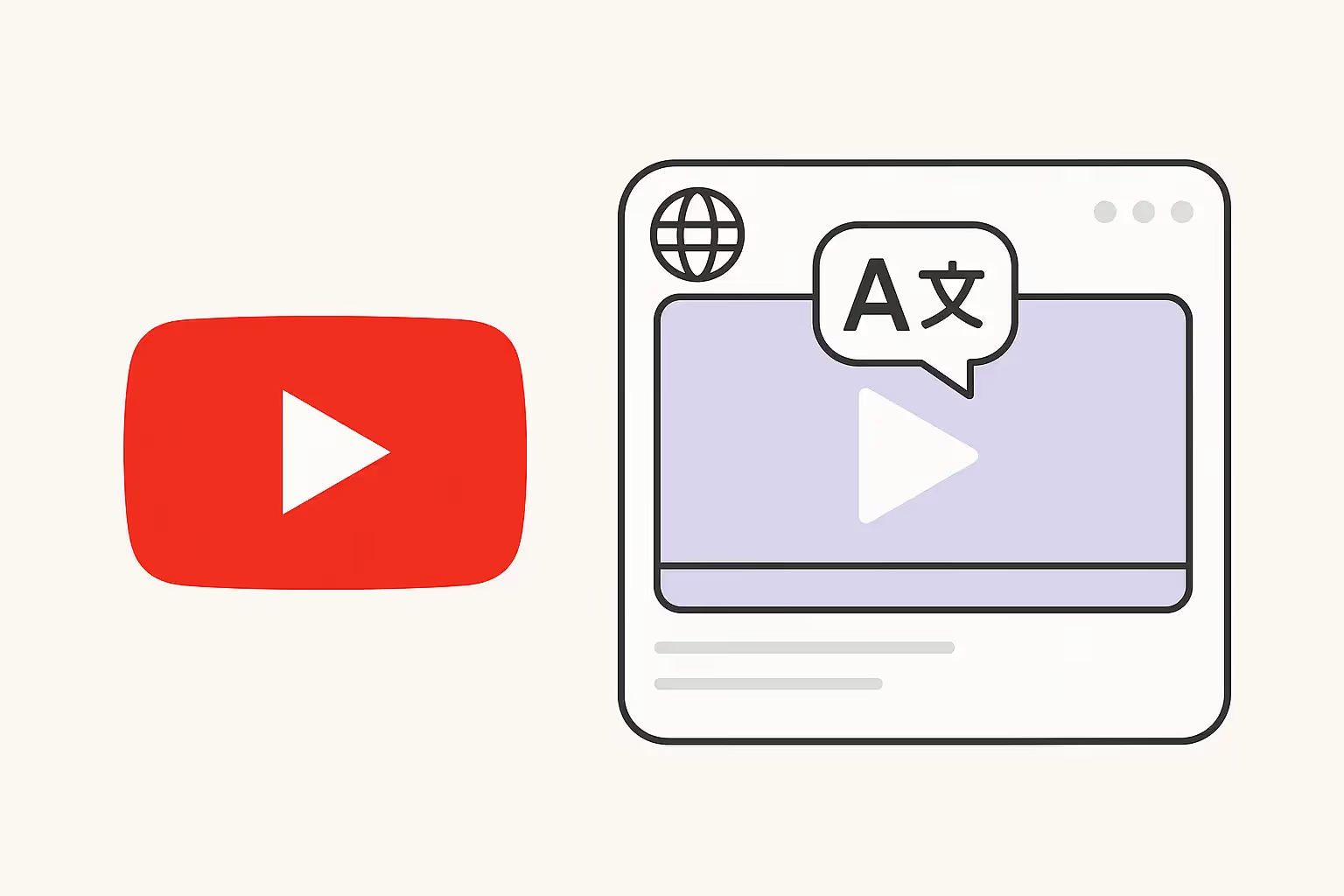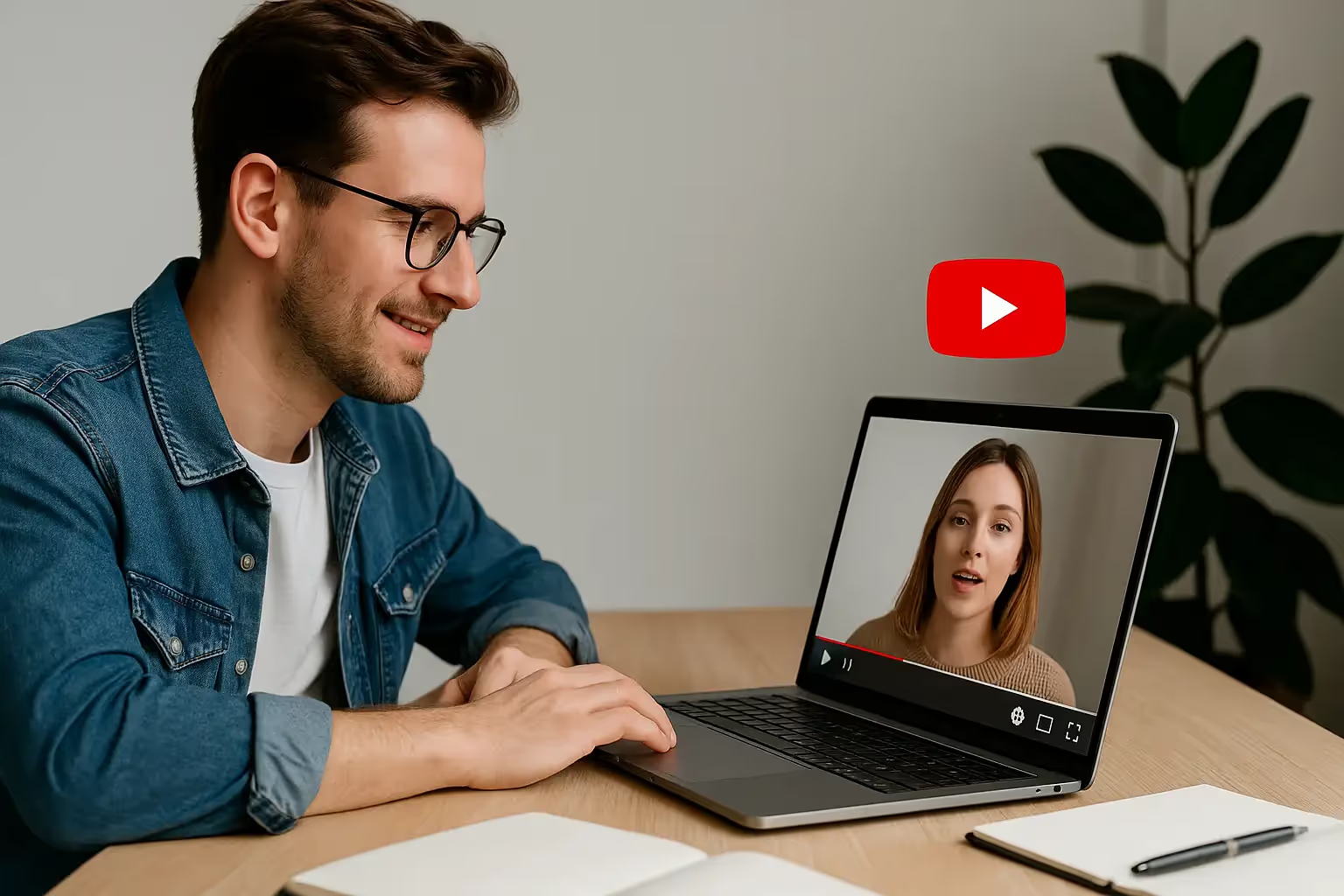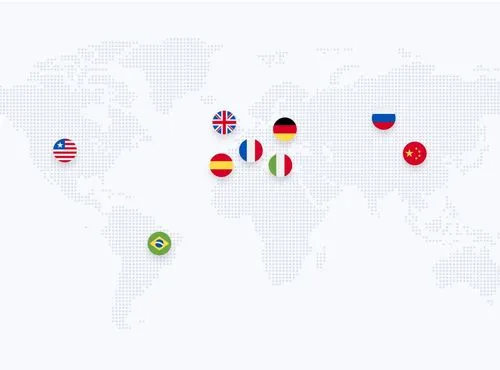Use Cases
September 12, 2025
How to Translate YouTube Videos Professionally – and Reach a Global Audience

Why Translate Your YouTube Videos?
- Reach viewers who couldn’t understand your content before
- Boost views, engagement, and watch time
- Make complex topics accessible to more people
- Strengthen your international brand image
- Better serve multilingual communities
Whether you're an educator, a software brand, or a creative team – going multilingual makes your channel more inclusive and far more powerful.
Publishing Strategies for Multilingual Content
1. Multi-Language Audio (MLA)
YouTube now allows you to upload multiple audio tracks for a single video.
Users can switch languages directly in the video player.
✅ One video, multiple languages
✅ Views and engagement stay in one place
✅ Clean and scalable for branded channels
With Dubly, you simply export the translated audio as an .mp3 and upload it in the "Languages" section of your YouTube Studio.
Perfect for tutorials, interviews, explainers, and product content.
2. Separate Channels or Playlists per Language
For larger content libraries or region-specific branding, separate language channels or playlists might make sense.
✅ Tailored experience for each audience
✅ Better localization of thumbnails, descriptions, and tags
✅ SEO and community building per market
Often used by agencies, global brands, or content creators managing large-scale multilingual strategies.
Translation Methods – What Are Your Options?
Option 1: Subtitles Only
The simplest form of translation: add translated subtitles to your original video.
Pros:
- Easy to implement
- No voiceover or audio needed
- Useful for quick tutorials or silent content
Cons:
– Less immersive experience – Requires users to read constantly – Lower engagement for high-value or emotional content – Not accessible to people with reading difficulties
Option 2: Traditional Dubbing (Studio, Voice Actors, Editing)
The classic way: translate the script, hire native voice actors, record in a studio, sync, edit.
Pros:
- High-quality, natural voiceovers
- Strong emotional resonance (if done perfectly)
Cons:
– Very expensive (often €150–400 per minute) – Time-consuming (weeks per video) – Difficult to scale for frequent or short-form content – Hard to update if the source video changes
Option 3: AI-Based Translation with Dubly
The modern alternative: use Dubly to automatically translate your video – with natural AI voices, lip sync, and full editing control.
Pros:
- High-quality, human-sounding voices
- 30+ supported languages
- Built-in lip sync for speaker alignment
- Editable translations in-tool
- Custom glossary support for technical accuracy
- Native Speaker Review available
- Audio file export for YouTube MLA
- GDPR-compliant, scalable infrastructure
Cons:
– Extremely expressive or theatrical content may need manual touch-ups

Why Dubly Is the Best Fit for YouTube Translation
Dubly is purpose-built for professional video translation – especially for platforms like YouTube.
✅ Natural AI voices (not robotic)
✅ Lip sync included
✅ Fully editable text
✅ Custom glossaries for brand consistency
✅ Native Speaker Control for critical projects
✅ Audio export for MLA publishing
✅ Fast, scalable, and 100% GDPR-compliant
✅ Real human support via chat and call
Whether you're translating one video per month or hundreds per week, Dubly adapts to your workflow.
What Type of Content Works Best?
Dubly is ideal for:
- Explainer videos & tutorials
- Webinars & presentations
- Product demos & reviews
- Educational & scientific content
- Interviews and testimonials
- Social media clips & Shorts
Less suitable: music videos or abstract visuals without clear speech.
FAQ: Translating YouTube Videos Professionally and Reaching a Global Audience
Why is it worth translating YouTube videos professionally?
Because videos gain wider reach, improve viewer engagement, and help brands grow internationally.
What are the downsides of using only subtitles?
Subtitles can feel impersonal, distract from visuals, and fail to convey emotions effectively.
How does Dubly ensure professional YouTube results?
Dubly provides natural voices, accurate lip sync, glossary functions for brand consistency, and GDPR-compliant processing.
Which types of content benefit most from translation?
Marketing clips, tutorials, interviews, product demos, and explainer videos see the biggest impact from multilingual versions.
How can multilingual publishing on YouTube be optimized?
With Multi-Language Audio, multiple language tracks can be added to one video, allowing viewers to choose their preferred language.
{{cta}}
{{callout}}
Conclusion: Multilingual YouTube Starts with the Right Tool
YouTube gives you the platform. Dubly gives you the power.
With high-quality audio, seamless lip sync, and enterprise-ready features, Dubly helps you bring your videos into every language that matters – naturally and professionally.
Does the Dubly.AI free trial include the Lipsync feature?
Yes. We believe you need to experience the full technology to understand its value. The free trial includes Generative Lipsync and Voice Cloning, not just simple audio translation.
Is there a difference between a standard "Video translater" and Dubly.AI?
Yes. A standard "Video translater" often only translates text or audio. Dubly.AI is a comprehensive AI solution that adapts the visuals (mouth movements) to the audio, creating a seamless experience.
Can I use Dubly.AI for long-form content?
Yes. While many free tools limit you to 60 seconds, Dubly’s engine is built for scale – from TikTok Shorts to hour-long corporate training modules.
Can I use translate video free tools to internationalize my content?
Yes, absolutely. Using free tools is a great starting point to test new markets without a budget. However, keep in mind that methods like subtitles or basic video translator apps usually only transfer information, not emotion. To truly internationalize your brand's personality and retain viewers, you will eventually need lipsync technology to ensure the audience feels connected to you, not just the text.
Does a free ai video translator work for all types of videos?
It works well for content where the speaker is not visible, such as screen recordings or faceless tutorials. However, for any video featuring a person speaking on camera, a standard tool often falls short. Because it lacks lipsync, the visual mismatch distracts the viewer. For content meant to build trust or emotion, you need a solution that adapts both the voice and the visuals.
Is there a free version of Dubly.AI?
You can translate your first video for free so you can validate the quality with your own files. We believe in letting you prove the value first.
Does this work for any language?
Our AI supports over 30 languages, covering the majority of global markets (English, Spanish, German, French, Japanese, Mandarin, etc.). The Lip Sync works universally across these languages.
How accurate is the translation?
AI translation is very good (95%+), but for critical content, context matters. That is why we offer Native Speaker Control (NSC) as an add-on, where humans review the AI's work. This combines the speed of software with the precision of a native speaker.
Can I automate this process?
Yes. For agencies, media houses, or companies with high volume, we offer an API. This allows you to integrate video translation directly into your content management workflow, removing manual upload steps entirely.
Über den Autor

Newest articles

Use Cases
How to Translate Video Free: 3 Ways to multiply your reach
Looking for an AI video translator? We answer how to translate video free using 3 methods: Subtitles, Basic TTS, and Professional Lipsync.

Simon Pieren
December 8, 2025

Use Cases
Translate Video Free: A Guide to AI Translation, Lip Sync & Voice Cloning
Looking to "translate video free"? Learn the technical differences between standard dubbing and generative AI Lip Sync, and how to test professional quality risk-free.

Simon Pieren
November 28, 2025

Use Cases
How AI Video Translation Connects Global Teams
How AI video translation breaks down language barriers in enterprises - secure, empathetic, and scalable.

Simon Pieren
November 24, 2025
